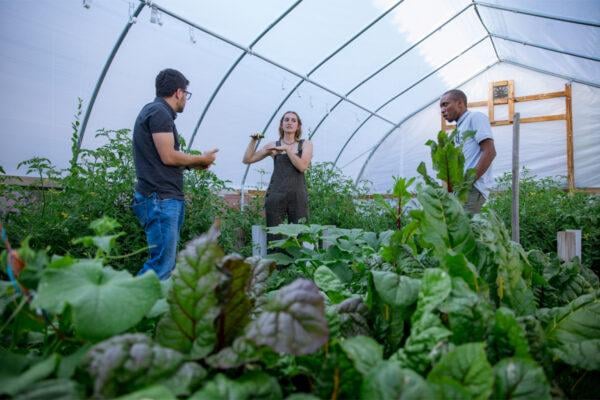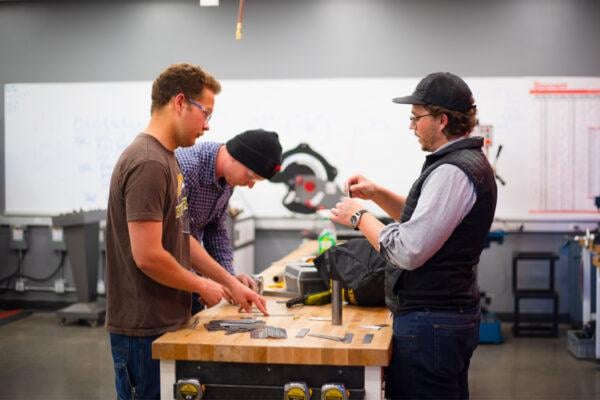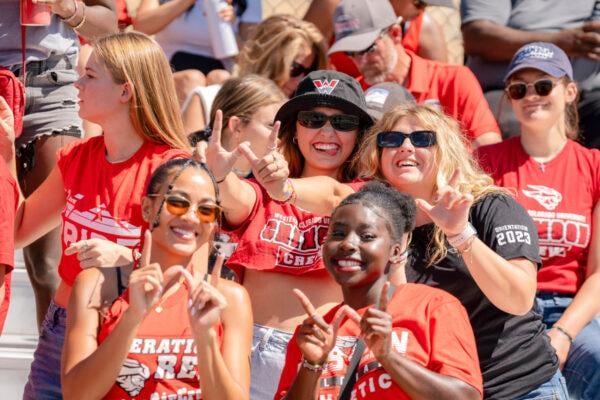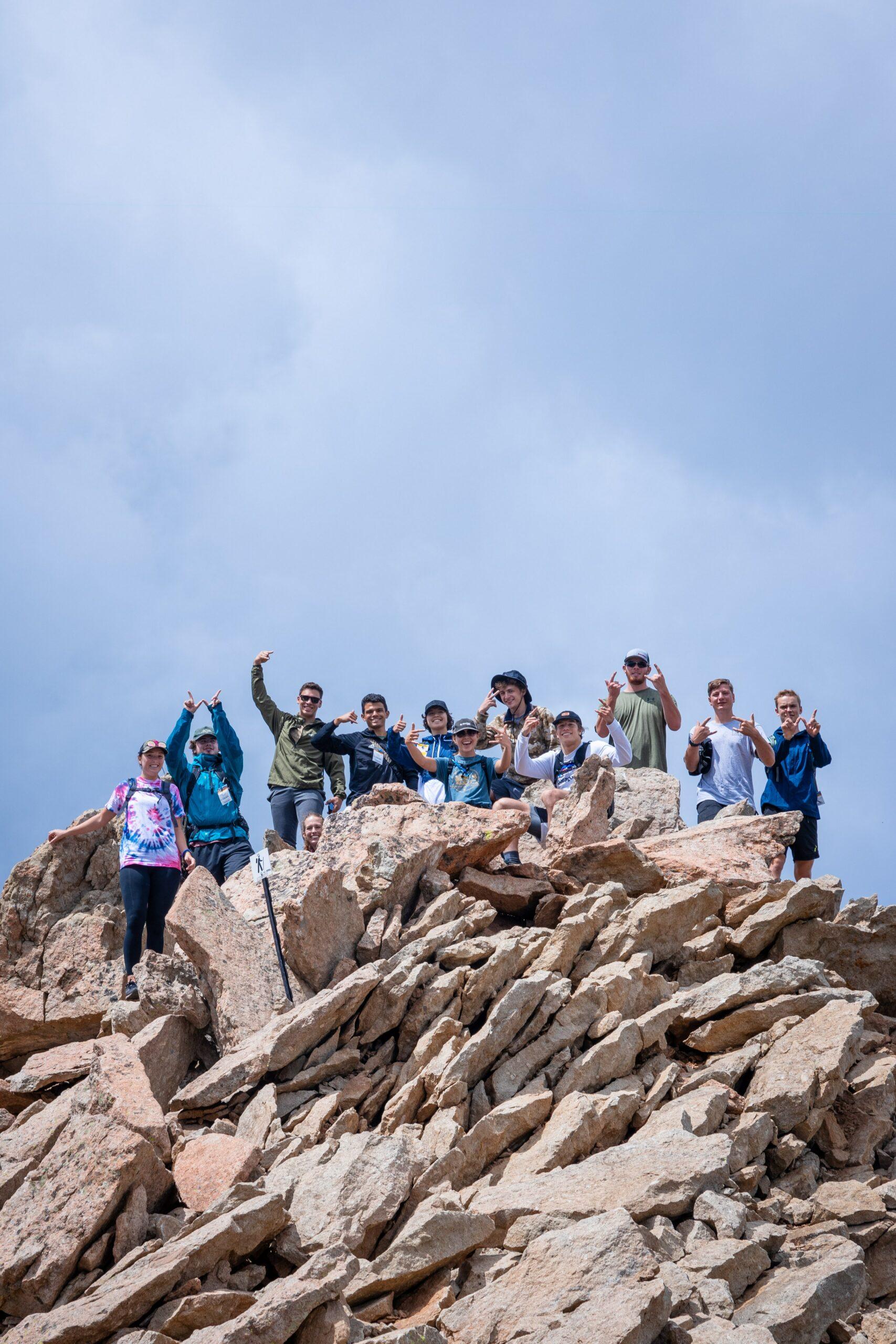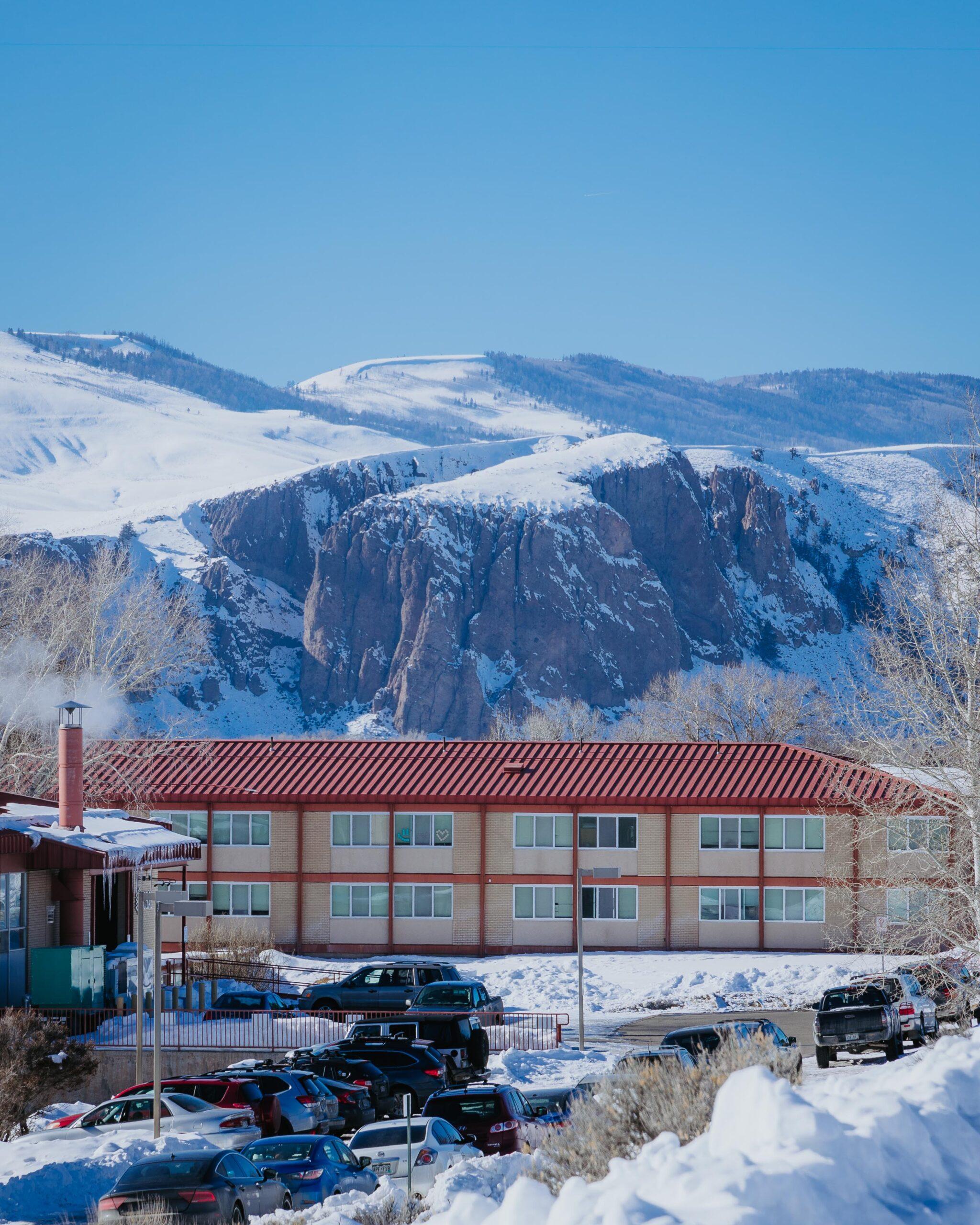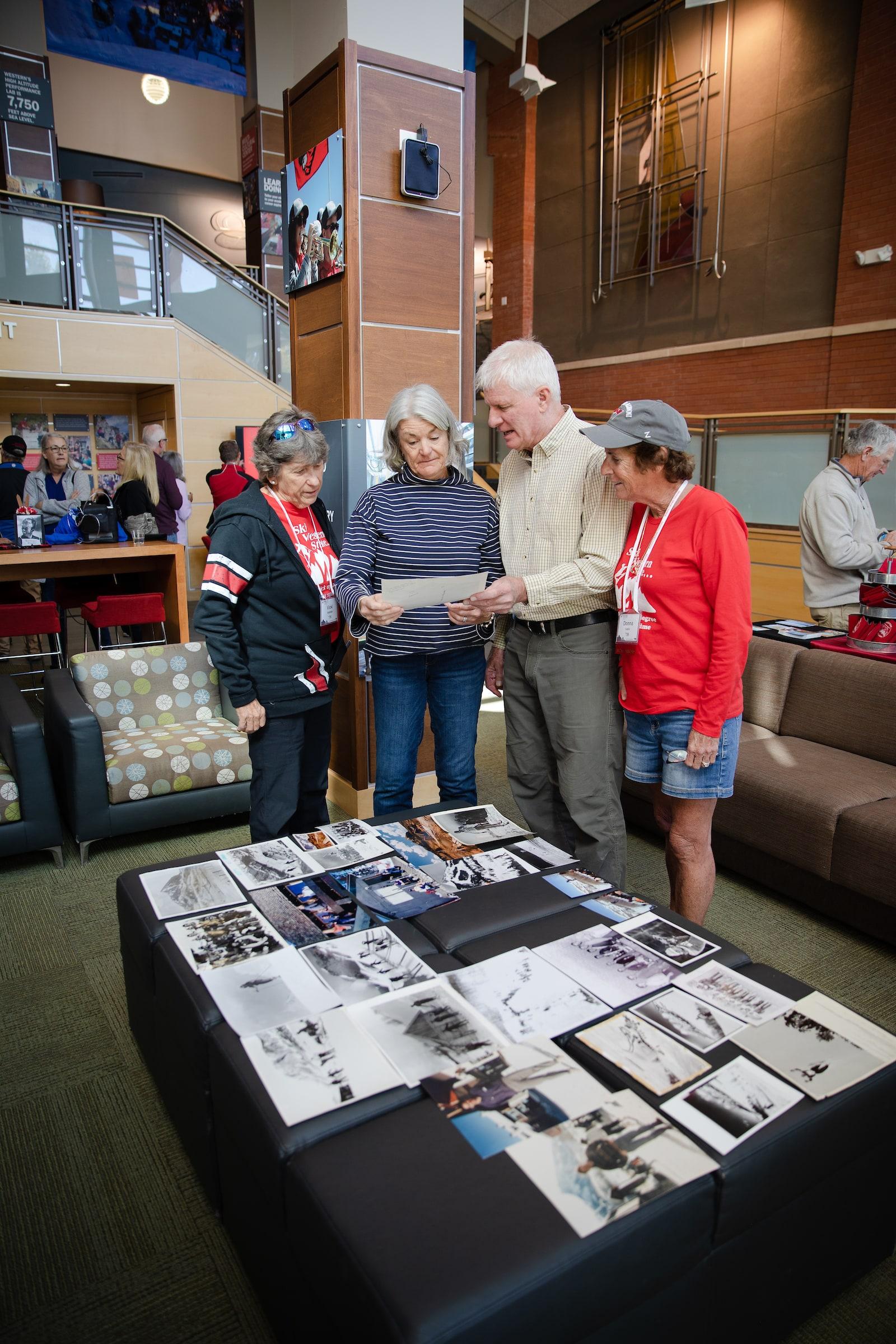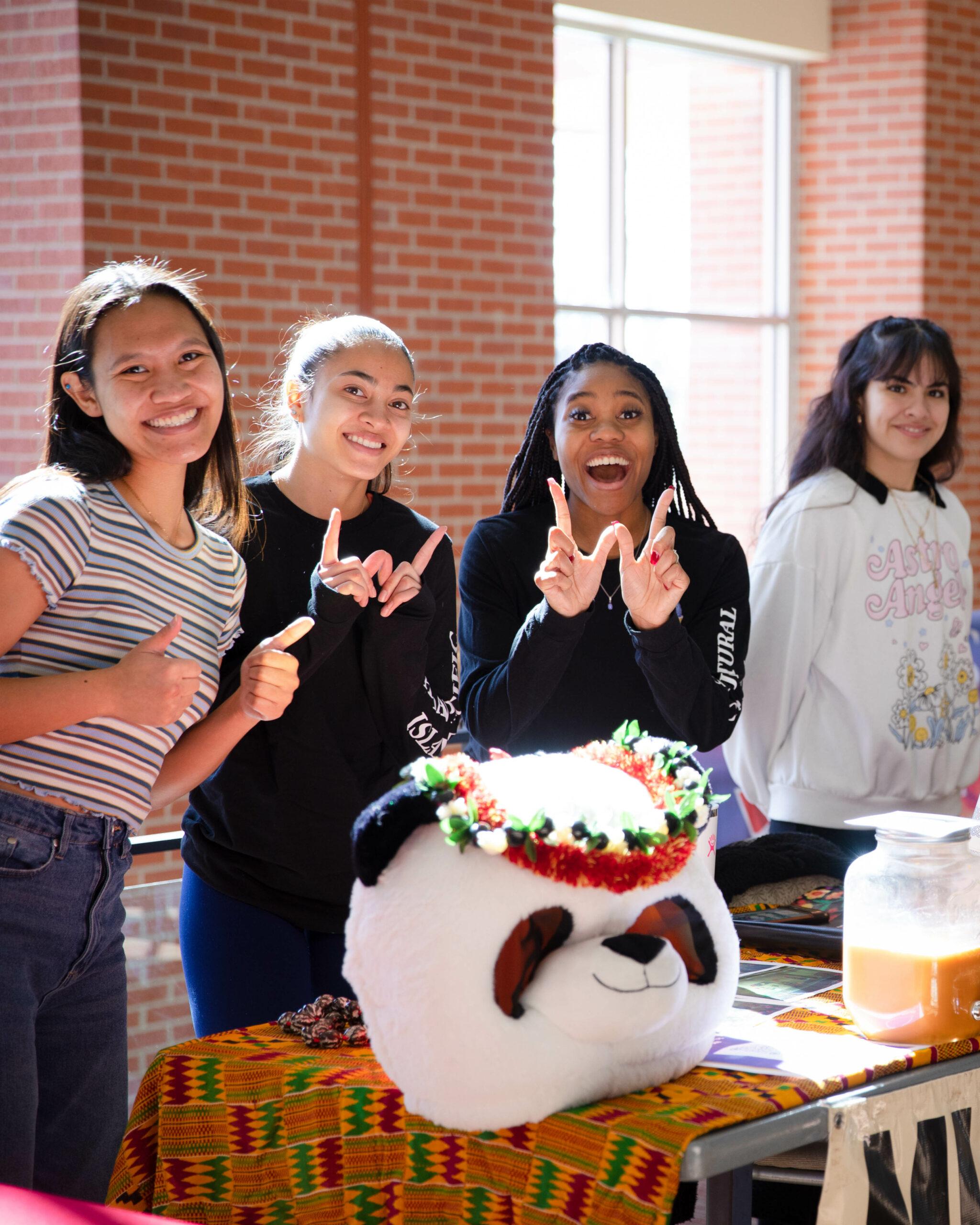For the 6,000-plus residents of Gunnison and the many tourists and truckers alike who travel to or through the small Colorado city along U.S. Highway 50, Tenderfoot Mountain is best known for the big “W” marked on it facing town. Many Gunnisonians know it only as W Mountain.
In 1923, the same year Gunnison’s Colorado State Normal School was transformed to a four-year liberal arts college known as Western, students constructed a big “W” on the large mountain just south of campus. With rocks extending 450 feet up and down, it’s America’s largest college logo. And once a year, the W is set ablaze in the evening to usher in Homecoming weekend on campus.
The American archaeology community, however, is much more interested in Tenderfoot Mountain’s mesa top, where in the mid-1990s with the help of his undergraduates, Stiger discovered a “Folsom point”—a projectile point of chipped stone. The artifact was the first evidence that Paleo Indians once roamed the mountaintop approximately 10,000 years ago. That’s right. Ten thousand years ago.
The archaeological significance of what would soon be labeled the Mountaineer Site atop Tenderfoot Mountain and the fieldwork by Stiger play a prominent role in a recent episode titled “Colorado Experience: Paleo Indians” on RMPBS.
“The Paleo Indian people are the first human beings to arrive in the Americas,” said Steve Nash, Curator of Archaeology and Chair of Anthropology for the Denver Museum of Nature and Science, opening RMPBS’ 30-minute documentary, which first aired Nov. 16. The episode goes on to chronicle how Colorado in the 20th century became “the heartland of Paleo Indian studies,” according to Jason LaBelle, Ph.D., an Associate Professor of Anthropology at Colorado State University and Director of the Center for Mountain Plains Archaeology.
Ranking high among the significant discoveries in Colorado is Mountaineer Site, not only for the artifacts discovered, but also the story those artifacts tell.
“Paleo Indians continually surprise us,” said William J. Convery, Ph.D, an author and historian who served as Colorado State Historian from 2008-15, in the documentary. “We thought that they weren’t here for very long, and then Folsom and Clovis [archaeological] sites proved us wrong.
“It was also fairly commonly understood that Paleo Indians never went into the mountains. Or if they did, they didn’t stay there for very long because the mountains are, of course, so inhospitable in the wintertime. Who would stay in the mountains for any reasonable amount of time? But archaeological sites near Gunnison show that not only did American Indians live and thrive in the mountains, but they lived there for very long periods of occupation.”
Convery alluded to what Stiger discovered soon after unearthing Folsom points—evidence of long-term habitation sites (“pit structures”) shallow below the surface atop Tenderfoot Mountain.
“When we first discovered how important this site was, we talked about moving all the cellphone towers,” Stiger said in the documentary. “What we’ve decided to do is to leave everybody in place but keep any from expanding.”
Thanks to the work by Stiger and Western’s Archaeology Department, an agreement was reached in October 2013 to protect the Mountaineer Site, which is owned by the State of Colorado, managed by Western and closed to the public. This Cultural Resource Management Plan restricts access by telecommunications firms to designated roads and parking areas, protecting the discoveries by Stiger, his students and generations of archaeologists to come.
“This mesa top has literally hundreds of small occupations on it,” Stiger said. “They’re all over the place. There seems to be a number of different early time periods represented.”
You can learn more about the Mountaineer Site and Stiger’s archaeological fieldwork by watching the episode in full on pbs.org. There will also be a free screening by Colorado Experience of not only the “Paleo Indians” episode, but also a “Mountain Biking” episode, which has yet to air, featuring nearby Crested Butte on Jan. 16 from 6-8 p.m. on the Western campus.
Story by Bryan Boyle, Marketing Communications. Photo by Randall Gee.

